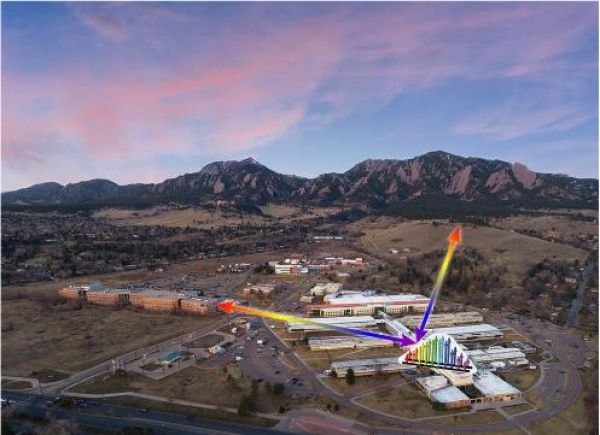Researchers at the National Institute of Standards and Technology (NIST) have upgraded their laser frequency-comb instrument to simultaneously measure three airborne greenhouse gases — nitrous oxide, carbon dioxide and water vapor — plus the major air pollutants ozone and carbon monoxide.
Combined with an earlier version of the system that measures methane, NIST’s dual comb technology can now sense all four primary greenhouse gases, which could help in understanding and monitoring emissions of these heat-trapping gases implicated in climate change. The newest comb system can also help assess urban air quality.
These NIST instruments identify gas signatures by precisely measuring the amounts of light absorbed at each color in the broad laser spectrum as specially prepared beams trace a path through the air. Current applications include detecting leaks from oil and gas installations as well as measuring emissions from livestock. The comb systems can measure a larger number of gases than conventional sensors that sample air at specific locations can. The combs also offer greater precision and longer range than similar techniques using other sources of light.
Read more at National Institute of Standards and Technology (NIST)
Image: NIST researchers used a laser frequency-comb instrument (illustration at lower right) to simultaneously measure three airborne greenhouse gases -- nitrous oxide, carbon dioxide and water vapor -- plus the major air pollutants ozone and carbon monoxide over two round-trip paths (arrows) from a NIST building in Boulder, Colo., to a reflector on a balcony of another building, and another reflector on a nearby hill. (Credit: N. Hanacek/NIST)


